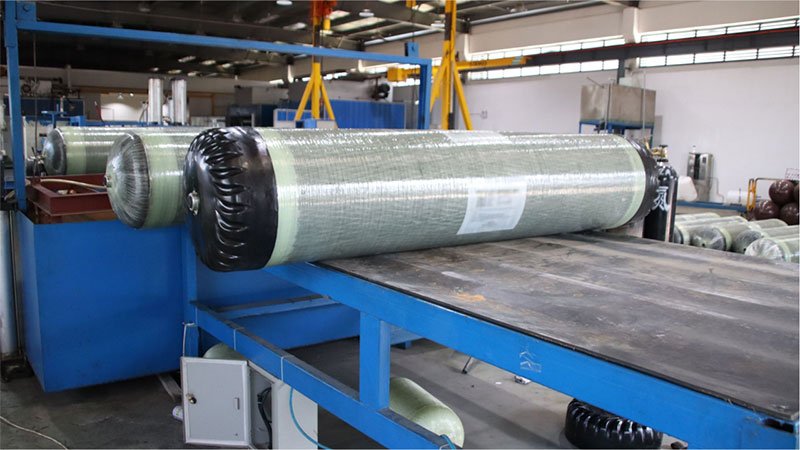Efficient hydrogen storage technology is the key to the widespread application of hydrogen energy. Among the on-board hydrogen storage technologies, high-pressure gaseous hydrogen storage has attracted much attention. Its advantages such as simple equipment structure, low energy consumption for hydrogen preparation, and fast filling and discharge speed make it the mainstream hydrogen storage method.

In high-pressure hydrogen storage cylinders, the common nominal working pressure range is 35-70MPa. At present, there are four main types of high-pressure hydrogen storage cylinders: all-metal cylinders (type I), metal liner fiber hoop-wound cylinders (type II), metal liner fiber fully wrapped cylinders (type III), and non-metal liner fiber fully wrapped cylinders (type IV). However, although type I and type II have a relatively large weight-to-volume ratio, it is difficult to meet the requirements of hydrogen fuel cell vehicles for hydrogen storage density. In contrast, type III and type IV hydrogen storage bottles adopt a fiber fully wrapped structure, which has the advantages of a small weight-to-volume ratio and a high hydrogen storage density per unit mass, so they have been widely used in the field of hydrogen fuel cell vehicles.
Composite material high-pressure gaseous hydrogen storage bottles are mainly composed of composite materials, valves, regulators, assembly inspection and hydrogen. Composite materials are regarded as the development trend of hydrogen storage bottle technology because they have the characteristics of lightweight, high pressure, high hydrogen storage density and long life. Compared with traditional metal materials, polymer composite materials can reduce the wall thickness of the tank while maintaining the same pressure resistance level, improve the capacity and hydrogen storage efficiency, and reduce the energy consumption cost during long-distance transportation. Composite hydrogen storage cylinders include lining materials, transition layers, fiber winding layers, outer protective layers, and buffer layers from the inside to the outside. The cycle of hydrogen storage cylinders may be long, and hydrogen has strong permeability under high pressure, so the lining material of hydrogen storage tanks must have good barrier function to ensure that most of the gas can be stored in the container.
The carbon fiber winding molding process adopted by Shandong Chanyan Haikong Composite Material Co., Ltd. is wet winding. The wet winding equipment mainly includes fiber racks, tension control equipment, dipping tanks, spinning nozzles, and rotating core mold structures. We use a combination of rotary winding and circumferential winding. The circumferential winding can eliminate the circumferential stress caused by the internal pressure of the cylinder, and the rotary winding can provide longitudinal stress to improve the overall performance of the cylinder.
Email : sales@hkfhcl.com
Tel : +86 13325126331
WhatsApp : +86 13325126331
Add :No. 2877 Shengfu Road, Shengjing Street, Zhangqiu District, Jinan, Shandong, China
